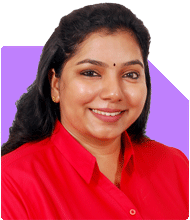Ramalingam Kalirajan |7838 Answers |Ask -Follow
Mutual Funds, Financial Planning Expert - Answered on Jul 11, 2024
He has an MBA in finance from the University of Madras and is a certified financial planner.
He is the director and chief financial planner at Holistic Investment, a Chennai-based firm that offers financial planning and wealth management advice.... more

We have been poor investors all through due to family issues.We have about 10 years to retire .There is a home loan of 65 lakh and PL of 10 lakh. Our combined income is 350000pm.What can we do increase our savings and build a reasonable corpus in the next ten years.Also to mention we are expected to receive 50000 pension on retirement.Our household expense is 60000 pm
Assessing Monthly Finances
First, let’s break down your monthly finances. You earn Rs 3,50,000 and spend Rs 60,000 on household expenses. That leaves you with Rs 2,90,000. This surplus is your key to saving and investing for a comfortable retirement.
Loan Repayment Strategy
Paying off your home loan and personal loan should be a priority. Focus on the personal loan first due to its higher interest rates. Once that's cleared, increase your EMI for the home loan. Reducing debt quickly will save you a significant amount in interest.
Emergency Fund
Ensure you have an emergency fund covering at least six months of expenses. This is critical for financial stability. Given your expenses, Rs 3,60,000 should be your target. Keep this fund in a high-interest savings account or liquid mutual funds.
Systematic Investment Plan (SIP)
SIPs are a fantastic way to build wealth over time. You already have a substantial amount left after expenses and loan repayments. Begin with allocating a significant portion of this surplus to SIPs in mutual funds. Diversify your investments across various categories like large-cap, mid-cap, and small-cap funds to balance risk and reward.
Advantages of Mutual Funds
Mutual funds are managed by experienced professionals. They offer diversification, reducing risk. With SIPs, you can benefit from rupee cost averaging, investing a fixed amount regularly regardless of market conditions. This helps in buying more units when prices are low and fewer when prices are high.
Active vs. Index Funds
Actively managed funds have the advantage of being overseen by fund managers who can adjust the portfolio based on market conditions. They aim to outperform the market, unlike index funds which merely mimic it. Although index funds have lower fees, the expertise of a fund manager in active funds can potentially provide higher returns.
Direct vs. Regular Funds
Direct funds have lower expense ratios as they don't involve intermediaries. However, investing through a certified financial planner (CFP) ensures you get expert advice tailored to your financial goals. Regular funds, though slightly costlier, offer the benefit of professional guidance which can be crucial in making informed decisions.
Power of Compounding
Investing early and regularly in mutual funds harnesses the power of compounding. Your returns generate earnings over time, significantly increasing your wealth. For example, an investment of Rs 1 lakh today could grow exponentially over ten years with regular contributions and compounding returns.
Asset Allocation
Asset allocation is crucial in balancing risk and reward. Spread your investments across equities, debt, and gold. Equities provide high returns but are riskier. Debt funds are safer but offer lower returns. Gold acts as a hedge against inflation. A balanced portfolio mitigates risk while aiming for growth.
Retirement Corpus
With ten years to retirement, you need a robust plan. Considering your expected Rs 50,000 pension, aim for a corpus that can generate an additional Rs 1,50,000 per month. This can be achieved by disciplined investing in mutual funds, ensuring your corpus supports a comfortable lifestyle.
Monthly Investments
Here’s a suggested allocation for your surplus Rs 2,90,000:
Rs 1,00,000 for SIPs: Allocate across large-cap, mid-cap, and small-cap funds.
Rs 50,000 for debt funds: Ensures stability and lower risk.
Rs 10,000 for gold: Acts as an inflation hedge.
Rs 1,30,000 for loan repayment: Focus on clearing personal loan first, then home loan.
Reviewing and Adjusting
Regularly review your portfolio’s performance. Adjust your investments based on changing market conditions and your financial goals. Consulting with a CFP can provide insights into optimizing your strategy.
Insurance and Risk Management
Ensure you have adequate life and health insurance. Life insurance should cover at least ten times your annual income. Health insurance is crucial to cover medical expenses without dipping into your savings.
Tax Planning
Invest in tax-saving instruments under Section 80C like ELSS mutual funds, PPF, and NPS. This not only reduces your tax liability but also contributes to your retirement corpus.
Professional Guidance
Consider working with a certified financial planner. They can provide personalized advice, ensuring your investment strategy aligns with your financial goals and risk tolerance.
Final Insights
You have a strong foundation with a substantial monthly surplus. By focusing on loan repayment, systematic investing, and strategic asset allocation, you can build a robust corpus for retirement. Regular reviews and adjustments, along with professional guidance, will ensure you stay on track towards a financially secure future.
Best Regards,
K. Ramalingam, MBA, CFP,
Chief Financial Planner,
www.holisticinvestment.in
You may like to see similar questions and answers below
Ramalingam Kalirajan |7838 Answers |Ask -Follow
Mutual Funds, Financial Planning Expert - Answered on Apr 23, 2024
Ramalingam Kalirajan |7838 Answers |Ask -Follow
Mutual Funds, Financial Planning Expert - Answered on May 20, 2024
Ramalingam Kalirajan |7838 Answers |Ask -Follow
Mutual Funds, Financial Planning Expert - Answered on May 27, 2024
Milind Vadjikar |976 Answers |Ask -Follow
Insurance, Stocks, MF, PF Expert - Answered on Nov 17, 2024
Mayank Chandel |1991 Answers |Ask -Follow
IIT-JEE, NEET-UG, SAT, CLAT, CA, CS Exam Expert - Answered on Feb 05, 2025
Mayank Chandel |1991 Answers |Ask -Follow
IIT-JEE, NEET-UG, SAT, CLAT, CA, CS Exam Expert - Answered on Feb 05, 2025
Milind Vadjikar |976 Answers |Ask -Follow
Insurance, Stocks, MF, PF Expert - Answered on Feb 05, 2025
Milind Vadjikar |976 Answers |Ask -Follow
Insurance, Stocks, MF, PF Expert - Answered on Feb 05, 2025
Ravi Mittal |520 Answers |Ask -Follow
Dating, Relationships Expert - Answered on Feb 05, 2025
Ramalingam Kalirajan |7838 Answers |Ask -Follow
Mutual Funds, Financial Planning Expert - Answered on Feb 05, 2025
Pushpa R |49 Answers |Ask -Follow
Yoga, Mindfulness Expert - Answered on Feb 05, 2025
Pushpa R |49 Answers |Ask -Follow
Yoga, Mindfulness Expert - Answered on Feb 05, 2025
Dr Nagarajan Jsk |231 Answers |Ask -Follow
NEET, Medical, Pharmacy Careers - Answered on Feb 05, 2025
Milind Vadjikar |976 Answers |Ask -Follow
Insurance, Stocks, MF, PF Expert - Answered on Feb 05, 2025























